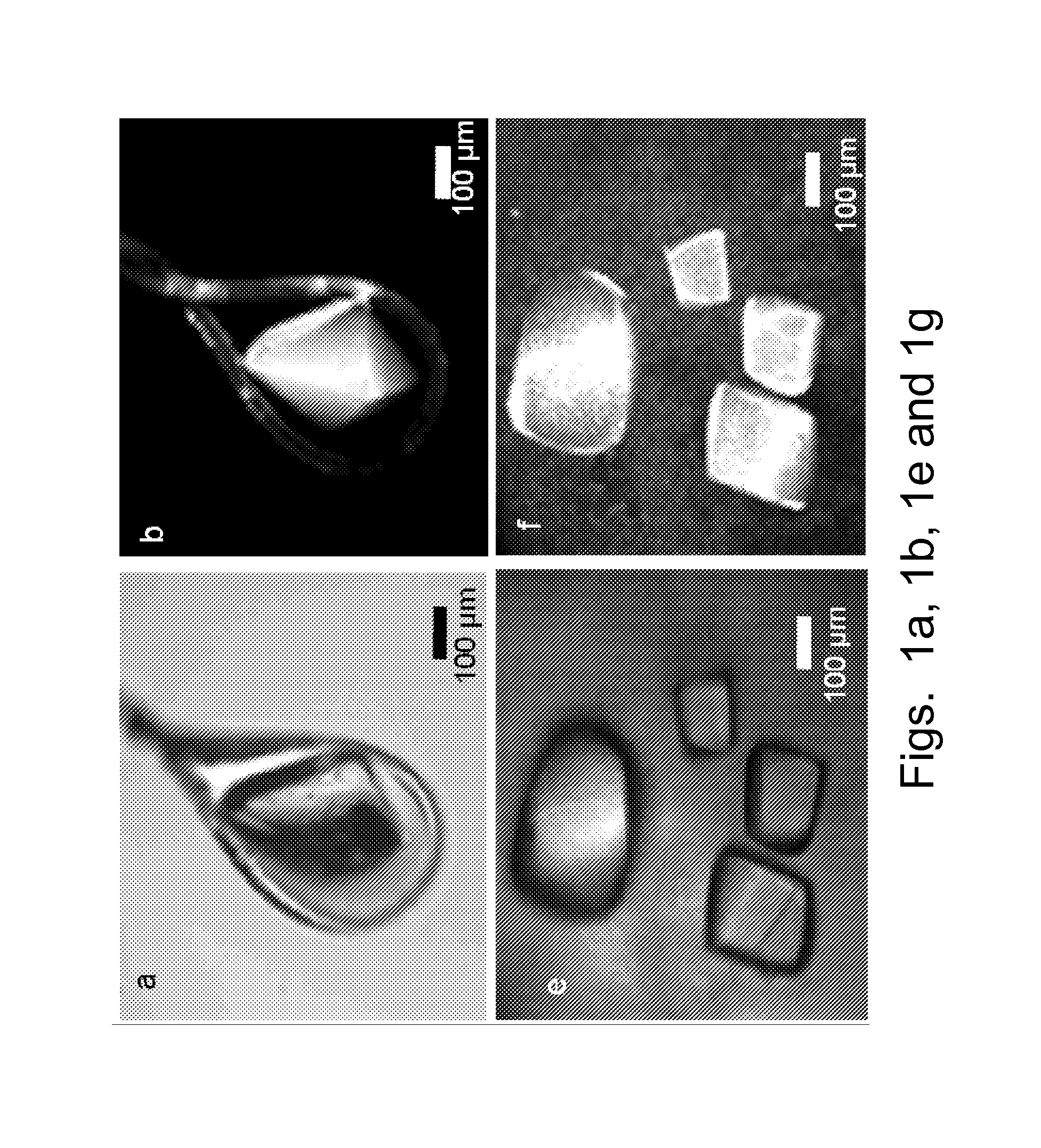Multiphoton luminescence imaging of protein crystals
a protein crystal and luminescence imaging technology, applied in the field of protein crystal detection methods, can solve the problems of high false-positive/false-negative rate, limited general applicability, and the inability of uv fluorescence to easily distinguish between disordered aggregates and microcrystalline conglomerates
- Summary
- Abstract
- Description
- Claims
- Application Information
AI Technical Summary
Problems solved by technology
Method used
Image
Examples
Embodiment Construction
[0029]The present disclosure provides a method of detection and imaging protein crystals. In particular, multiphoton excited luminescence is employed for selective detection and imaging of protein crystals. The method includes illuminating a sample with a laser; collecting an emission spectrum, evaluating the spectrum, and determining whether the sample contains protein crystals. Preferably, the sample is excited by simultaneous absorption of two or more photons. More preferably, the sample is excited by simultaneous absorption of two or three photons. Preferably, the known spectra of protein crystals are used to evaluate the observed spectrum, and therefore identify the presence of protein crystals.
[0030]The present method can detect any suitable protein crystals, such as super-oxide dismutases (SODs), lysozyme, insulin, myoglobin, deubiquitinating enzymes, and combinations thereof. The method also can be used to image polymers, such as polyamides, amino-dendrimers, etc.
[0031]The i...
PUM
 Login to View More
Login to View More Abstract
Description
Claims
Application Information
 Login to View More
Login to View More - R&D
- Intellectual Property
- Life Sciences
- Materials
- Tech Scout
- Unparalleled Data Quality
- Higher Quality Content
- 60% Fewer Hallucinations
Browse by: Latest US Patents, China's latest patents, Technical Efficacy Thesaurus, Application Domain, Technology Topic, Popular Technical Reports.
© 2025 PatSnap. All rights reserved.Legal|Privacy policy|Modern Slavery Act Transparency Statement|Sitemap|About US| Contact US: help@patsnap.com



